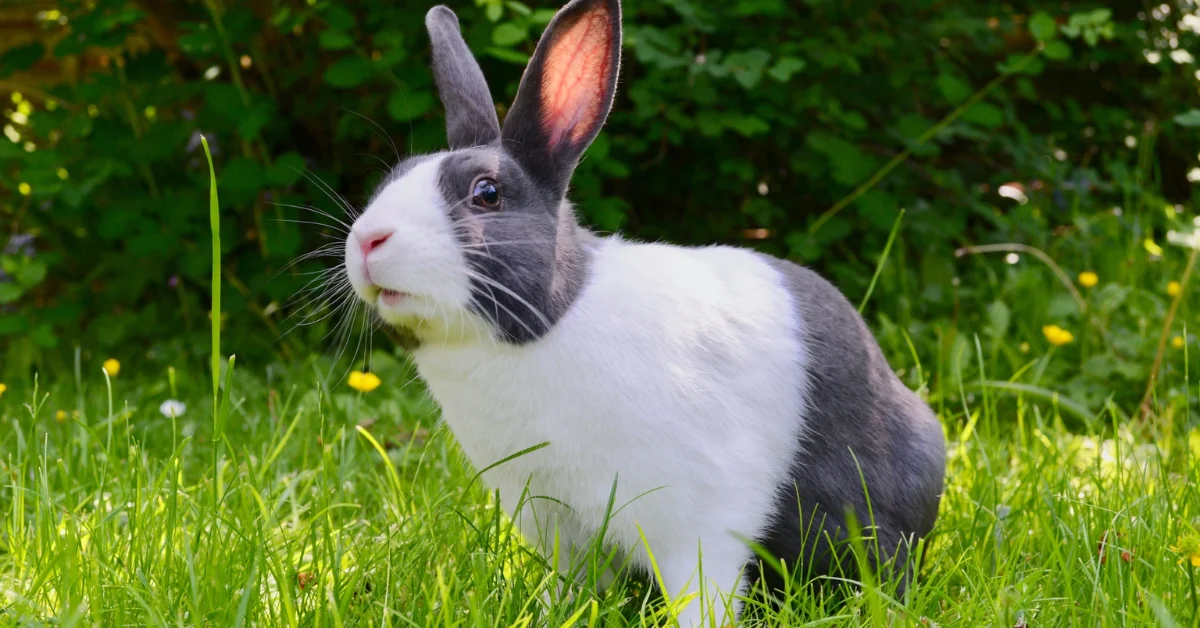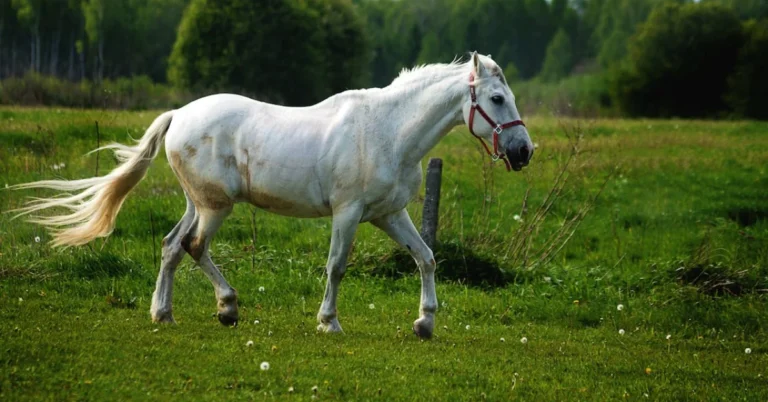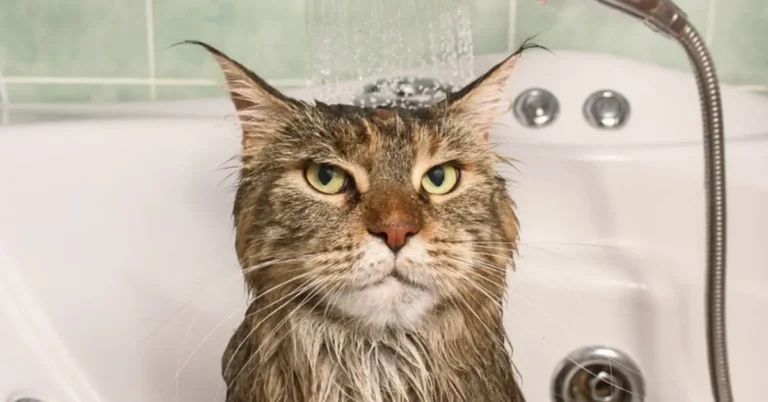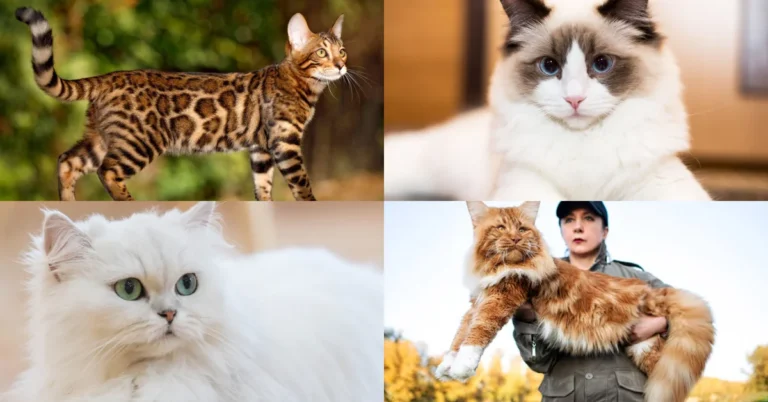Peering into the large, ink-black eyes of a rabbit, have you ever wondered what the world looks like through their gaze? Do they see vibrant hues like we do, or is their world composed of varying shades of gray? As rabbit owners and observers, understanding the nuances of lagomorph vision allows us a gateway into their unique sensory experience, helping enrich their lives. By exploring the intricacies of their visual system, we unveil the complex and wondrous realm they inhabit.
The Building Blocks: Rabbit Retinal Anatomy

Like humans, rabbits possess retinas lined with light-sensitive photoreceptor cells including rods for low-light vision and cones for color perception. However, significant differences exist in the distribution and composition of these cells that ultimately shape their visual capabilities. Rabbits have an abundance of rods, allowing superb night vision finely tuned to their crepuscular activity patterns. Additionally, they lack red-sensitive cone pigments, possessing only blue and green cones. This results in dichromatic color vision biased towards shades of green and blue rather than the vibrant, three-cone technicolor perception of the human visual system.
But what does this truly mean for the average rabbit’s vision? Can they experience color at all with just two cone types? Research suggests that, contrary to the myth of total colorblindness, rabbits indeed see the world in diverse shades of green, blue, and gray. Their visual acuity surpasses rodents and approaches levels near humans. By delving deeper into the specifics of their visual system, we gain insight into precisely how rabbits perceive their surroundings.
Characterizing Rabbit Color Vision

Several seminal studies in rabbit vision science help characterize the extent of lagomorph color perception. Electroretinogram recordings of cone cell response patterns provide key evidence that rabbits distinguish blue from green wavelengths. Behavioral experiments also demonstrate color vision capabilities. When presented with varying gray-scale squares, rabbits failed to detect camouflaged gray dots matching the background shade, yet rapidly identified the same dots against colored backgrounds, proving adept at color discrimination essential for survival.
Analyzing cone cell density ratios and distributions offers further clues into a rabbit’s color experience. Modeling their dual cone vision reveals a blue-green world with limited red perception – a shadow of human trichromatic vision but far from colorless. Their green sensitivity closely approaches that of humans. However, lacking a third red-sensitive cone type significantly impacts their color mixing capabilities. Rabbits would, for instance, have trouble distinguishing purple hues from blue, and certain shades of brown, red, and green may visibly blend into their unique visual palette.
Beyond scientific measurements, cautious anthropomorphism and empathy provide gateways to imagine a rabbit’s perspective. Owners often share anecdotes of bunnies demonstrating preferences for blue or green objects, visually tracking toys in the grass, and recognizing owners surprisingly well despite dichromatic vision. Such stories stir curiosity about the nuances of their visual experience. Do different breeds see colors differently? How do wild and domestic rabbits compare? Can they see more vivid hues at certain times of day? Much remains to be explored regarding the extent of rabbit color vision.
Expert Sensory System: Vision Optimized for Survival

While lacking some aspects of human color perception, rabbits flourish in other facets of vision optimized for their lifestyle needs. As prey animals, their large interorbital breadth provides panoramic vision spanning nearly 360 degrees. This grants keen environmental awareness and enhanced detection of aerial and ground predators. Their eyes are also remarkably adapted for crepuscular activity patterns with a high rod ratio permitting excellent vision under dim moonlight.
Additionally, rabbits demonstrate superior visual acuity and motion detection skills suited for monitoring approaching threats while grazing. They possess an elongated visual streak of high ganglion cell density granting sharp detail of objects straight ahead – ideal for inspecting food items and safety. Meanwhile, lower peripheral density allows broader sensitivity to movement – enabling rapid escape from predators. Augmenting their vision, rabbits also employ highly sensitive whiskers to navigate spaces and detect nearby threats or obstacles even in darkness.
Promoting Rabbit Visual Health and Enrichment

Understanding key aspects of rabbit vision allows us to provide better care, enrichment, and bonding. Recognizing their innate need for proper lighting, enriching their world with suitable colors and textures tailored to their visual capabilities, and respecting their eye anatomy during handling enables happier, healthier rabbits.
As crepuscular animals, ensuring adequate indoor lighting on a proper day/night cycle maintains healthy vision and behavior in our pet rabbits. Providing areas of moonlit-dimness for sleeping juxtaposed with well-lit play spaces caters best to their natural rhythms. Protecting their sensitive eyes with proper wooden hiding areas rather than plastic also prevents injury and light over-exposure.
Incorporating appropriately colored toys into rabbit environments enhances engagement and enrichment. As dichromats, rabbits better distinguish shades of blue, green, and purple rather than red objects that visually dissolve into backgrounds. Thus, deep green grass-like mats or blue tunnel tubes make ideal stimulating and camouflaging play spaces. Tactile and chew-friendly willow balls, mats, and sticks also promote natural foraging enrichment.
Gently working around a rabbit’s expansive field of vision builds stronger bonds during handling and grooming. Approaching slowly from the front and being careful not to loom overhead prevents fearful responses. Respectfully working within their sightlines, speaking soothingly, and using positive reinforcement deepens trust and rapport between rabbit and guardian.
The Beauty of Varied Perception: Appreciating Rabbit Vision

While revealing key insights about sensory capabilities, the mysteries of animal perception can never be fully unlocked with our human-centric lens alone. We must humbly accept the limitations of our imagination and embrace the wonder of diverse experiences. The world appears vastly differently through the large shining eyes of rabbits, cats, dogs, and other species. Setting aside assumptions allows us to fully respect and enrich each being’s distinctive reality.
Rather than ranking visual prowess against arbitrary human benchmarks, we must recognize rabbits possess a beautifully adapted sensory system that adeptly serves their needs in nature. Through devoted study of their capabilities and mindful empathy for their perspective, we unlock new pathways to bond with our beloved pets. Their world is complete and vibrant within the palette nature endowed them. By catering to rabbit care, enrichment, and bonding to match their sensory strengths, we form deeper interspecies connections that transcend our narrow human reality. In the shining void of a rabbit’s eye, we glimpse profound beauty and find inspiration to celebrate the diversity of all life’s magical perceptions.
The Crux of Olfaction: A Rabbit’s View of the World Through Scents

Beyond vision, another sense reigns supreme in guiding the average rabbit throughout their lives – the magical realm of smell. While human brains devote a meager 5% processing space to olfaction, lagomorphs commit nearly 50% of mental resources to this sense alone. It serves not merely as a tool for seeking food or avoiding danger but functions akin to a visual landscape painting an information-rich sensory tapestry of their world. From the moment they first inhale in the nest box as newborns, smell, and taste remain the most meaningful senses a rabbit employs to navigate their entire existence.
The Rabbit Nose: A Marvel of Evolution

The rabbit nose provides the gateway into this olfactory landscape, exquisitely equipped as one of the most impressive mammalian noses. Over 20 million olfactory cells line their nasal chambers – 400 times more than average humans. These integrate input in a huge rabbit brain region devoted to smell, granting rabbits astonishing sensitivity and discrimination ability. They detect and interpret scents with nuance rivaling specialty detection dogs. Studies demonstrate rabbits can distinguish dilute odors at just a few parts per billion concentration – identifying individual scent markers and faint food aromas from remarkable distances even if out of sight.
Scent as Sensory Scene: How Rabbits Employ Smell

Rather than a sporadic sense used only when overcome by obvious odors, smell provides rabbits with a constant environmental scan much like human vision. Both wild and domestic rabbits’ navigation depends heavily upon reading scent cues that provide key data about food, social dynamics, safety, identity, and emotional states far beyond human smell capabilities. They employ smell for:
- Finding Food: Rabbits can detect favorite foods like herbs and greens from far off even when obscured, guiding them to nutritional sources.
- Avoiding Predators: Scents signaling nearby predators trigger visceral fear and escape reflexes critical for survival.
- Social Communication: Rabbits identify each other’s unique scent signatures conveying identity, bonding status, and more. They often greet noses first.
- Territorial Navigation: Scent markings from fellow rabbits provide “signposts” indicating safe paths and boundaries between ranges.
- Bonding & Emotion Sensing: Rabbits smell hormonal changes indicative of mood, stress level, and compatibility with mates.
This ever-present environmental scan paints a detailed smelly image guiding nearly all rabbit behavior. Sight takes a back seat to “seeing” the world through their nose.
Promoting Rabbit Olfactory Enrichment

Recognizing smell as rabbits’ primary sense, we must enrich spaces to engage this system. Incorporating fragrant herbs like parsley or mint provides sniffing stimulation. Extracts like vanilla or floral blends add novel scents to encourage exploration. Keeping areas scent-free including litter habits prevents unpleasant ambiance.
The Language of Touch: Rabbit Whiskers and Tactile Communication

Shifting the focus to other underappreciated rabbit senses beyond smell and sight, we arrive at the remarkable world of touch. Human hands discover the environment through careful grasping and prodding. For rabbits, elegant extra-sensory whiskers adorn their muzzle serving analogous functions. Constantly aquiver analyzing spatial gradients, these specialized hairs provide a sensitivity that operates akin to a combined blind person’s cane and insect antennae. Far more than decorative face fur, rabbit whiskers reveal themselves as essential data-gathering instruments sampling their surroundings.
Masterpieces of Engineering: The Structure and Function of Whiskers

Far more advanced than standard fur, rabbit whiskers boast an intricate infrastructure optimized for sensory purposes. With 5 times the innervation density of body hair, whiskers transmit abundantly detailed touch data to the brain. Encased by a thick sheath lending structural support, the hair shaft itself tapers to a supple narrow tip ideal for detecting minute pressures, vibrations, and wind currents. Muscles at the whisker base allow for protraction and retraction, controlling positioning. In sum, rabbit whiskers demonstrate masterful evolutionary engineering matching the elegance of their exterior form.
Rabbit Whisker Wisdom: How Touch Informs Behavior

In action, rabbits employ their elegant whiskers for diverse sensory feats both commonplace and remarkable. Ever swaying and probing, these hairs analyze and adapt to the surroundings, granting rabbits unique capabilities.
- Spatial Navigation: Whiskers sense topology judging openings, distances, and unfamiliar objects even in darkness allowing rapid movement through burrows.
- Foraging Decisions: Before taking a bite, rabbits assess foods by whisker touch providing detail unmatched even by excellent vision. This prevents accidental poisoning.
- Social Bonding: Rabbits strengthen connections via mutual whisker grooming and facial interaction. Their regal whiskers are indeed royalty.
- Predator Avoidance: Subtle air currents signaling threats immediately trigger whisker responses and defensive reactions before visual cues register danger.
In all these contexts, whiskers provide an intelligent sensory data stream updating rabbits with their immediate tactile situation and ever-shifting environment.
Lend Me Your Ears: The Sonic Landscape of Rabbits

Traveling on the sensory journey across rabbit perception, we next enter the world of sound. While vision, smell, and touch dominate defining a rabbit’s environmental awareness and behavior, hearing also plays an important supporting role. Often underestimated for their silence relative to dogs and birds, rabbits do indeed tap their large sensitive ears to extract valuable information about threats, food opportunities, and social bonds from surrounding audio signals. Whether the soft thump of an approaching mate or a far-off snap of a breaking twig hinting at predator presence, sounds cue key behavioral decision-making.
Auditory Advantages: The Biological Basis of Rabbit Hearing

Rabbits demonstrate a variety of specialized auditory adaptations allowing keen environmental listening attuned to frequencies relevant for survival. With pinnae large enough to visually obscure their shoulders when viewed head-on, rabbits boast impressively ample sound collection anatomy. Ample blood flow to the ears along with minimal insulating fur on the backside also prevents muffling that could limit audio sensitivity.
Internally, large eardrums receiving collected sound transmit vibrations to an elaborately folded cochlea well equipped for decoding air pressure patterns into neural signals. Attached sensory hair cells tap this fluid movement with optimal sensitivity to low and high-frequency sounds that provide the most behaviorally relevant cues – the rumbling footsteps of an approaching badger or the high-pitched squeal of rabbit kittens. Through the synergy of external and internal specializations, rabbits demonstrate auditory sensibilities matching their key hearing needs as prey animals.
Applications of Auditory Awareness: How Rabbits Employ Hearing

In daily life, rabbits tap their keen hearing to monitor threats, food opportunities, and social connections. Ever-vigilant ears constantly sample the acoustic environment, providing key information.
- Predator Detection: Pinpointing unseen threats by sound prompts immediate hide or flee responses to avoid danger.
- Foraging Guidance: Rabbits hear succulent plants crunching and rushing water guiding them towards promising feeding grounds.
- Communication: Rabbits identify each other by unique foot thump cadences and high-pitched vocalizations facilitating social bonds.
By eavesdropping on the auditory scene, rabbits obtain a layered sensory image of their surroundings augmenting perceptions from smell, touch, and vision to promote survival.
Final Thoughts
Appreciating hearing as an integral aspect of rabbits’ awareness and communication with the environment opens new pathways to enhance pet rabbit care through acoustic enrichment. Protecting sensitive ears from loud noises prevents damage and distress. Soothing music, nature sounds and rabbit vocalizations offer beneficial exposure to naturalistic audio environments promoting calm and connections. Decoding rabbit foot thumps, purrs, grunts, and screams build stronger bonds through improved cross-species communication and understanding.




